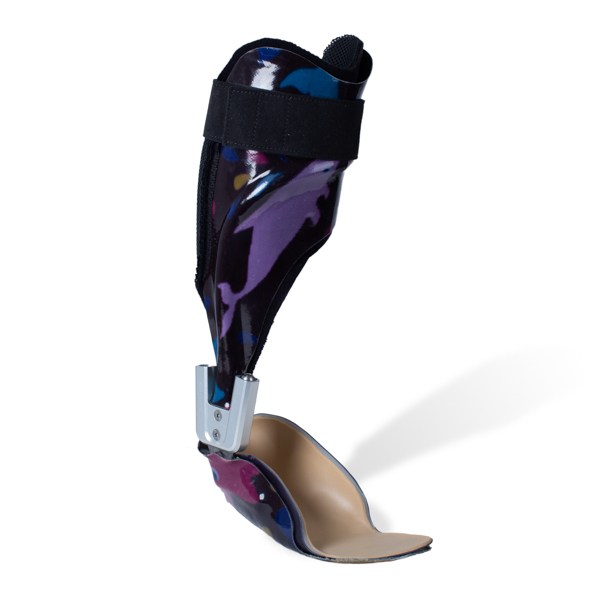The Ponsetti treatment for club foot was only introduced into the UK in the late 1990’s so there are a lot of adults who will not have enjoyed the benefits of this treatment and have to cope with the typical symptoms associated with the condition which could include:
Having to walk on their ankles or the sides of their feet
Many of these issues can be treated effectively with orthoses as we can manipulate the forces around joints and the internal structures of the foot and ankle.
These treatments include:
Dependent on what treatments you may have had in the past our clinicians will review your current symptoms and discuss what goals you want to achieve; this will help your clinician determine which is the right orthotic treatment for you.


“It’s life-changing, my swimming coach has even remarked what a difference my treatment has made" Read how pectus bracing treatment helped to correct Aris' complex chest deformity, involving a combination of pectus excavatum, pectus carinatum and rib flaring.

Cerebral palsy patient Lucas sees significant improvement in his walking after only six months in his new custom Ankle Foot Orthoses (AFOs), designed by Professor Saeed Forghany in our Manchester clinic. Hear how a detailed gait analysis and bespoke AFOs significantly improved Lucas's gait and comfort.

Freddie’s positional plagiocephaly was treated successfully with the LOCBand Lite, going from 11mm to 2mm after four months in his helmet.

Adult club foot (talipes) patient Natasha says, "I cannot stress how amazing my AFOs are and how they have changed so much for me. The support they give me allows me to walk without crutches outside the house for the first time in over fifteen years."

Diagnosed with adolescent idiopathic scoliosis at 14 years old, Polly and mum Zoe looked to the LOC Scoliosis Brace to help her curve and avoid surgery at a later date.

LOC opens its first clinic in Northern Ireland, LOC Belfast, offer non-surgical orthotic treatment for scoliosis, pectus carinatum and pectus excavatum. Here, we will also be able to provide orthotic treatments for a range of adult and paediatric lower limb conditions including cerebral palsy, spina bifida, hypermobility, stroke, post-polio syndrome, and multiple sclerosis.

Mum Natalie shares her experience of having both her identical twins diagnosed with craniosynostosis. Ella and Nina had surgery at Great Ormond Street Hospital before going through cranial remoulding therapy at the London Orthotic Consultancy.

See how a thorough gait analysis and a correctly-fitted, bespoke Reciprocating Gait Orthosis (RGO) helped Ted, a spinal surgery and cancer survivor, improve his rehabilitation and mobility goals, getting him back on his feet again.
The Cunningham Brace was designed by Jerald Cunningham, who runs his own clinic in the US. It works using a firm strap around the thigh and a spring that holds the brace up against the bottom of the foot. This means that the brace is always gently stretching your baby’s foot into the correct position, in a similar way that a therapist applies manipulation.
Jerald developed the brace at the request of an orthopaedic surgeon and colleague who saw how distressing the boots and bar process was for many children and parents. Jerald has worked on the design for more than 10 years, tweaking as he goes, based on x-ray evidence after every patient fitting.
The exact number will depend on your child and their condition, but typically a child will only need to wear two to three braces over a two-year period. The first for about six months, then a year each for the second and third.
Very often parents contact us before their baby is even born, having discovered the club foot on a scan. However, they first need to go through the Ponseti method with their consultant and then be triaged by a specialist physiotherapist before we can start treatment.
No problem. Often parents come to us after they’ve tried persevering with the boots and bar treatment for a few months. It may change our treatment plan a little and your child might need treatment for a bit longer, but the process will essentially be the same.
The cost of treating club foot depends on whether your child will need one or both legs braced. You can find all the information you need on our club foot treatment pricing page.
At the moment we can fit the brace at our clinics in Kingston-upon-Thames and Bristol; in addition, we can do follow up appointments at our Manchester clinic. There is a certain amount we can do virtually, but your first fitting would need to be done in person.
If your patient has asked you for more information about club foot treatment or the Cunningham Brace, our director Sam Walmsley would be happy to speak with you directly to explain the process. We can also offer your team an online presentation. Contact the LOC team if you’d like to know more.
The Ponseti method was only introduced in the UK in the late 1990s, which means there are lots of adults living with the long-term impact of untreated club foot. The good news is that many of the common problems that adults experience can be treated effectively with orthoses. Take a look at our treatment for adults with club foot page for more information.
If you would like to talk to us about your baby’s club foot and Cunningham Brace treatment, please don’t hesitate to get in touch via our Request an Appointment form or by calling us on 020 8974 9989.